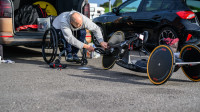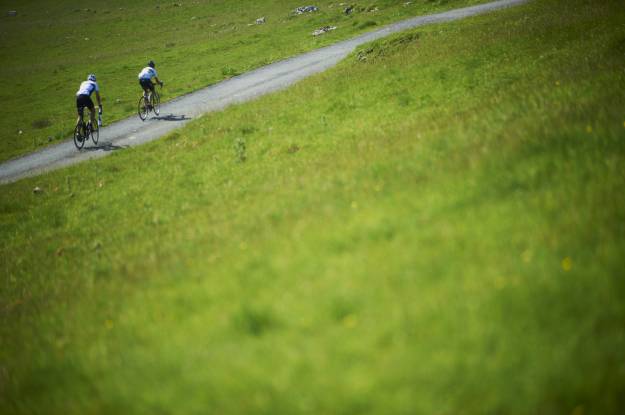If you have ever fallen off your bike on the road carrying any sort of speed then you have probably experienced road rash. In most cases it is often not too painful immediately after the incident, as adrenaline and endorphins help numb the pain and, apart from the embarrassing holes in your lycra, you are normally able to limp home. Once back however the suffering can really start. Fortunately Great Britain Cycling Team Head of Medical Services Dr Nigel Jones is on hand with some helpful advice.
What is road rash?
Road rash is an occupational hazard for cyclists as, if you ride a bike and especially if you race, at some stage you will probably come off. It is simply a wound caused by friction as you slide along the road or track. The top layer of the skin, the epidermis, is removed and then, depending on the severity, a number of layers underneath too.
What should I do once I get home?
The big issue with road rash is preventing infection. So, the priority is cleaning the wound and ensuring that any grit or debris is removed. It is going to sting but a sponge with some roughness to it in the shower is probably the easiest and most effective. For bad cases we will use an anaesthetic gel so that the riders can tolerate us giving it a good scrub.
If you have fallen hard, you may also want to ice the affected area to reduce swelling and inflammation. Cover the ice pack to prevent freezer burn and then use a protocol of 10 minutes on, 60 minutes off, six times during the day.
Should I use a dressing?
Leave the wound open to air as much as possible to facilitate healing. However, at night or if you have got clothes on, you will want to prevent the wound sticking to fabric. A simple non-adhesive dressing is a good as anything. Hydrocolloid dressings are good if you need to keep the wound covered. They can aid the drying out and healing processes and also often have an anti-bacterial affect. However for large wounds they can be very expensive and the healing benefits are marginal.
How long will it take to heal?
Healing time depends on the depth of the wound but you should have skin integrity, protection from germs and waterproofing, within 4-5 days. It’s not unusual though to have skin discolouration or scarring for several weeks or longer afterwards.
If you fall off hard and especially onto a bony area, such as your hips or knees, chances are you will also have bruised underlying tissues. Once you have full or near full range of movement in a joint when you’re not on a bike, you are probably okay to get back on and commence riding again.











